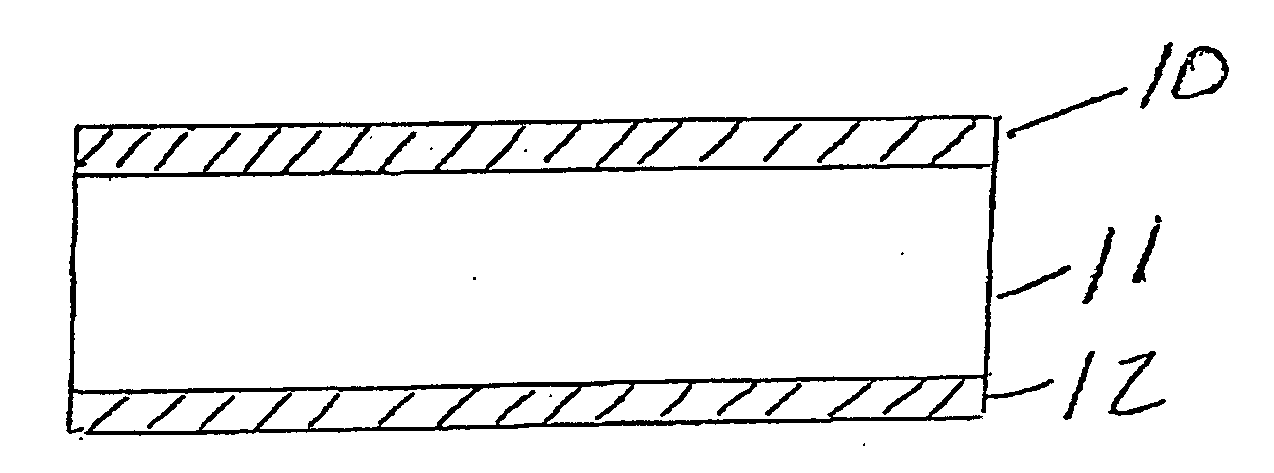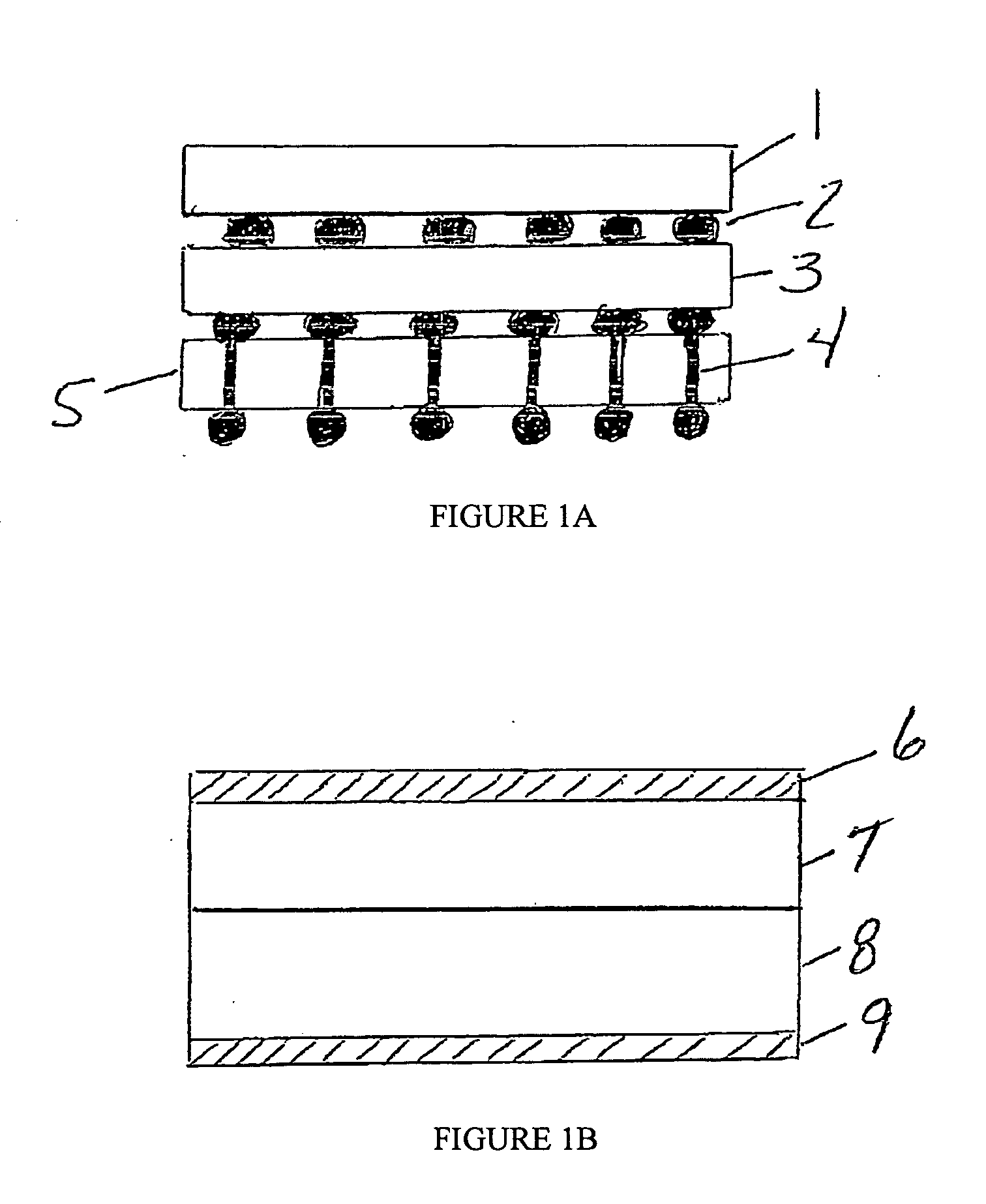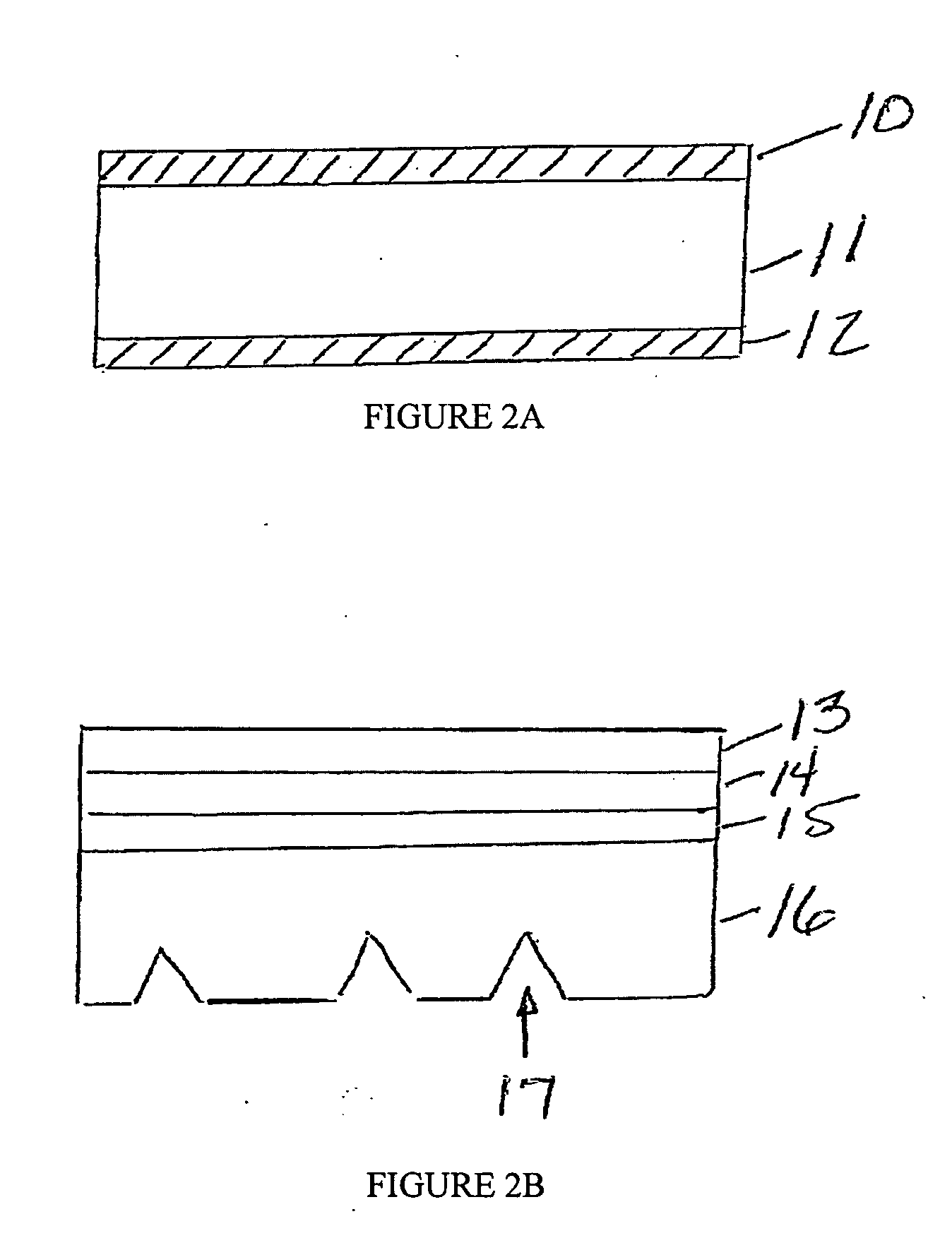Dual sided processing and devices based on freestanding nitride and zinc oxide films
- Summary
- Abstract
- Description
- Claims
- Application Information
AI Technical Summary
Benefits of technology
Problems solved by technology
Method used
Image
Examples
Embodiment Construction
[0055]FIG. 1A depicts a typical prior art three-dimensional device based on stacked silicon chips. Thinning is used to reduce the device thickness for both via formation, overall device thickness and thermal performance. This technique is used especially for memory devices to increase the amount of memory that can be contained within a given footprint. Memory layers 1, 3, and 5 are typically freestanding silicon films which are physically and electrically connected via interconnects 2. In this case, a via 4 may be used through the freestanding silicon films such that a high level of interconnect is created. However, the thinning processes used (polishing, etching, etc) negatively impact overall process yield and ultimate device cost.
[0056]FIG. 1B depicts a prior art technique to form a large area diode by using n doped layer 7 and p doped layer 8 with contacts 6 and 9. The resulting PN junction can be formed by growing n doped layer 7 or p doped layer 8 on the other layer or may be ...
PUM
 Login to View More
Login to View More Abstract
Description
Claims
Application Information
 Login to View More
Login to View More - R&D
- Intellectual Property
- Life Sciences
- Materials
- Tech Scout
- Unparalleled Data Quality
- Higher Quality Content
- 60% Fewer Hallucinations
Browse by: Latest US Patents, China's latest patents, Technical Efficacy Thesaurus, Application Domain, Technology Topic, Popular Technical Reports.
© 2025 PatSnap. All rights reserved.Legal|Privacy policy|Modern Slavery Act Transparency Statement|Sitemap|About US| Contact US: help@patsnap.com



